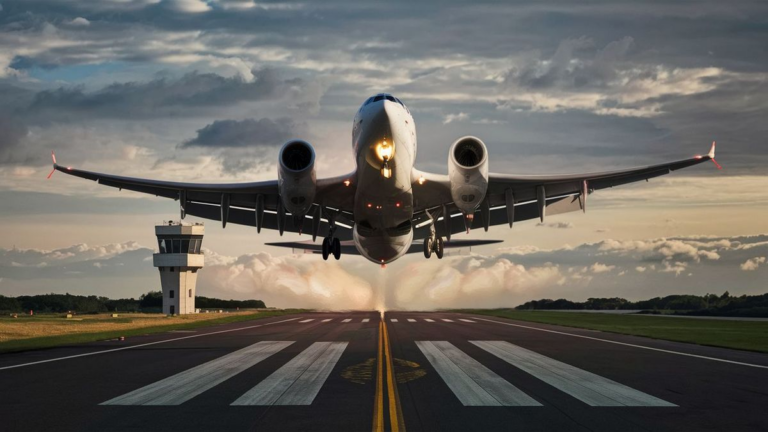When an aircraft leaves ground effect during takeoff, it enters a critical phase of flight where various aerodynamic factors come into play. This transition from ground effect to free flight has significant implications for the performance and handling of the aircraft.
Aerodynamic Changes
As the aircraft climbs out of ground effect, the aerodynamic forces acting upon it undergo noticeable changes. Lift, which is augmented by ground effect close to the ground, diminishes as the aircraft gains altitude. This reduction in lift necessitates a higher angle of attack to maintain altitude, which in turn increases drag.
Stability Considerations
Leaving ground effect during takeoff can also affect the stability of the aircraft. Ground effect provides a cushioning effect that enhances stability, especially at low speeds. Once the aircraft exits this zone, pilots may need to make adjustments to maintain stability, particularly if encountering turbulence or gusts.
Control Response
Another aspect affected by leaving ground effect is the aircraft’s control response. Pilots may notice changes in the sensitivity of controls as the aerodynamic environment shifts. It’s crucial for pilots to anticipate these changes and adapt their control inputs accordingly to ensure smooth and precise handling.
Performance Implications
The transition out of ground effect during takeoff can have implications for the overall performance of the aircraft. Climb rate may decrease initially as the aircraft adjusts to the new aerodynamic conditions. Pilots must be mindful of these performance changes and make appropriate power and pitch adjustments to maintain a safe ascent.
Stall Concerns
Leaving ground effect also raises concerns about stall margins. With reduced lift and potentially increased drag, the aircraft may be more susceptible to stall conditions, especially if operating close to its maximum takeoff weight. Pilots must be vigilant in managing airspeed and angle of attack to prevent an inadvertent stall.
Environmental Factors
Environmental factors such as wind shear and turbulence can further complicate the transition out of ground effect during takeoff. Pilots must be prepared to react to sudden changes in airflow and make timely adjustments to maintain control and stability.
Training and Experience
Effective training and experience are essential for pilots to manage the transition out of ground effect safely. Simulator training and real-world experience can help pilots develop the skills and judgment necessary to handle the challenges associated with leaving ground effect during takeoff.
Leaving ground effect during takeoff marks a critical phase in a flight where pilots must navigate changes in aerodynamic forces, stability, control response, and performance. By understanding these factors and exercising proper technique, pilots can safely transition out of ground effect and continue their flight with confidence.
Frequently Asked Questions
Here are some frequently asked questions regarding the transition out of ground effect during takeoff:
| Question | Answer |
|---|---|
| 1. How does leaving ground effect affect lift? | Leaving ground effect diminishes the lift experienced by the aircraft, requiring a higher angle of attack to maintain altitude. |
| 2. What adjustments might pilots need to make for stability? | Pilots may need to make adjustments to maintain stability, especially if encountering turbulence or gusts, as ground effect provides a cushioning effect that enhances stability. |
| 3. How does control response change? | Control response may change as the aerodynamic environment shifts, requiring pilots to anticipate these changes and adapt their control inputs accordingly. |
| 4. What are the performance implications? | The transition out of ground effect can initially decrease climb rate, requiring pilots to make appropriate power and pitch adjustments to maintain a safe ascent. |
| 5. How do environmental factors affect the transition? | Environmental factors such as wind shear and turbulence can further complicate the transition out of ground effect, requiring pilots to react to sudden changes in airflow. |
| 6. Why is training and experience important? | Effective training and experience are essential for pilots to safely manage the transition out of ground effect during takeoff, helping them develop the skills and judgment necessary to handle challenges. |
Aerodynamic Stability
One crucial aspect to consider during the transition out of ground effect is the aerodynamic stability of the aircraft. As the aircraft climbs, its aerodynamic characteristics change, affecting its stability. Pilots must be aware of these changes and employ proper techniques to maintain stability throughout the transition.
See also:






